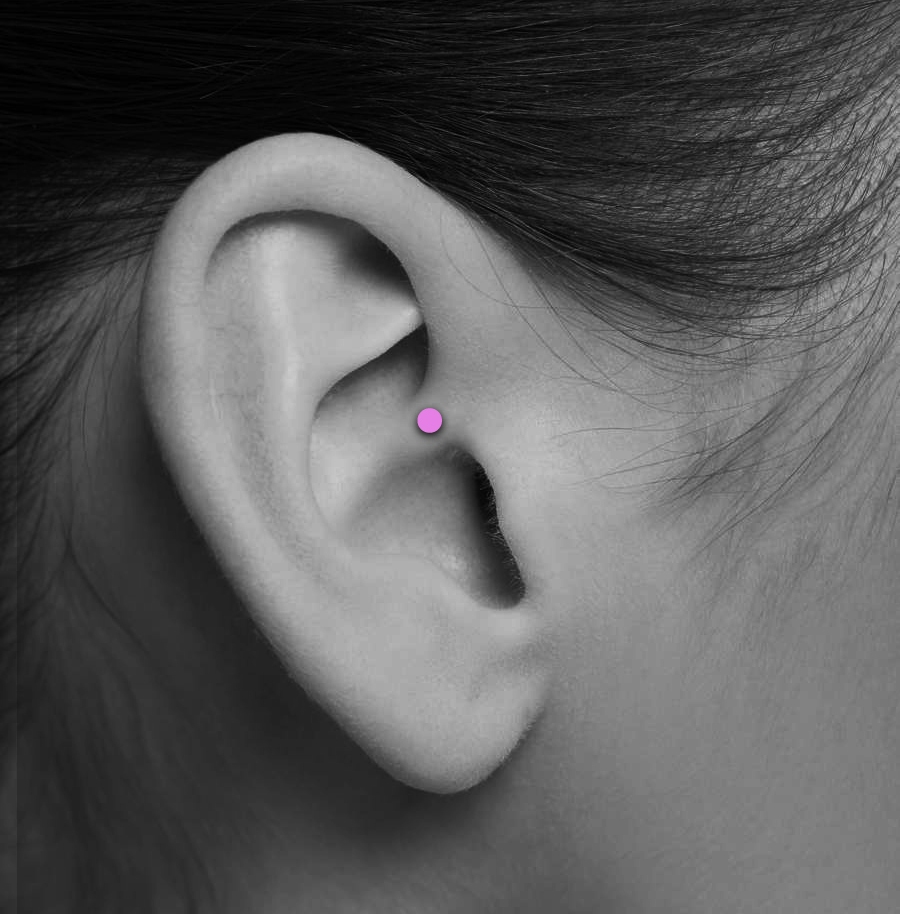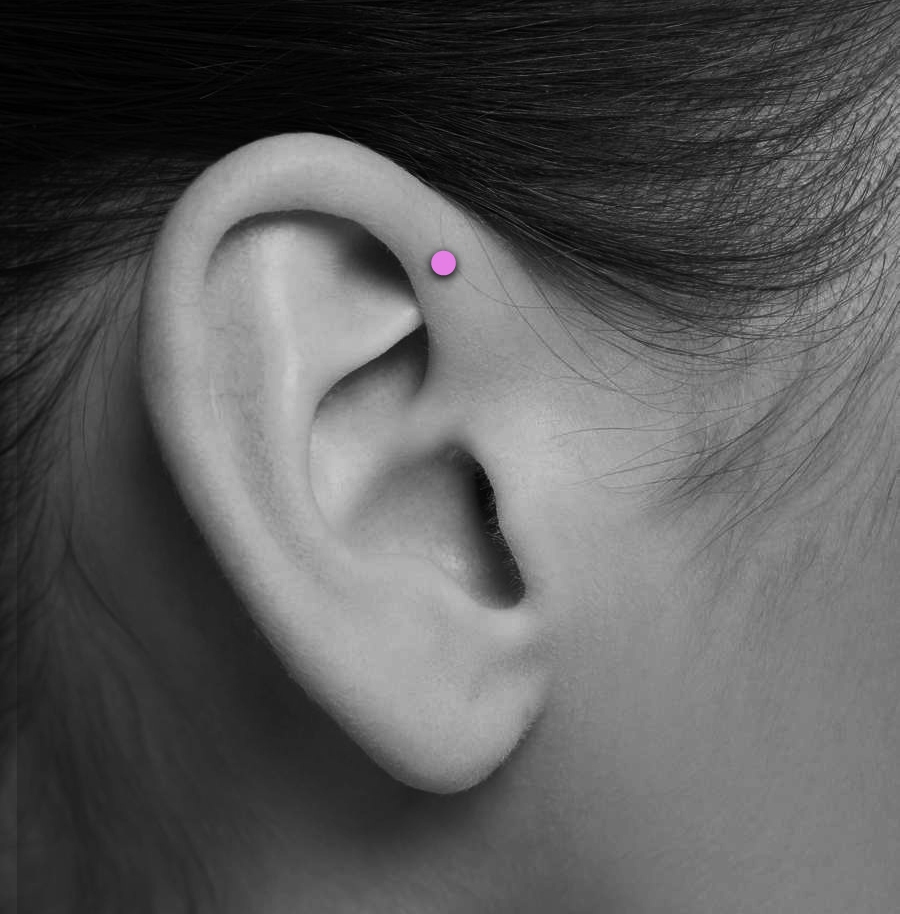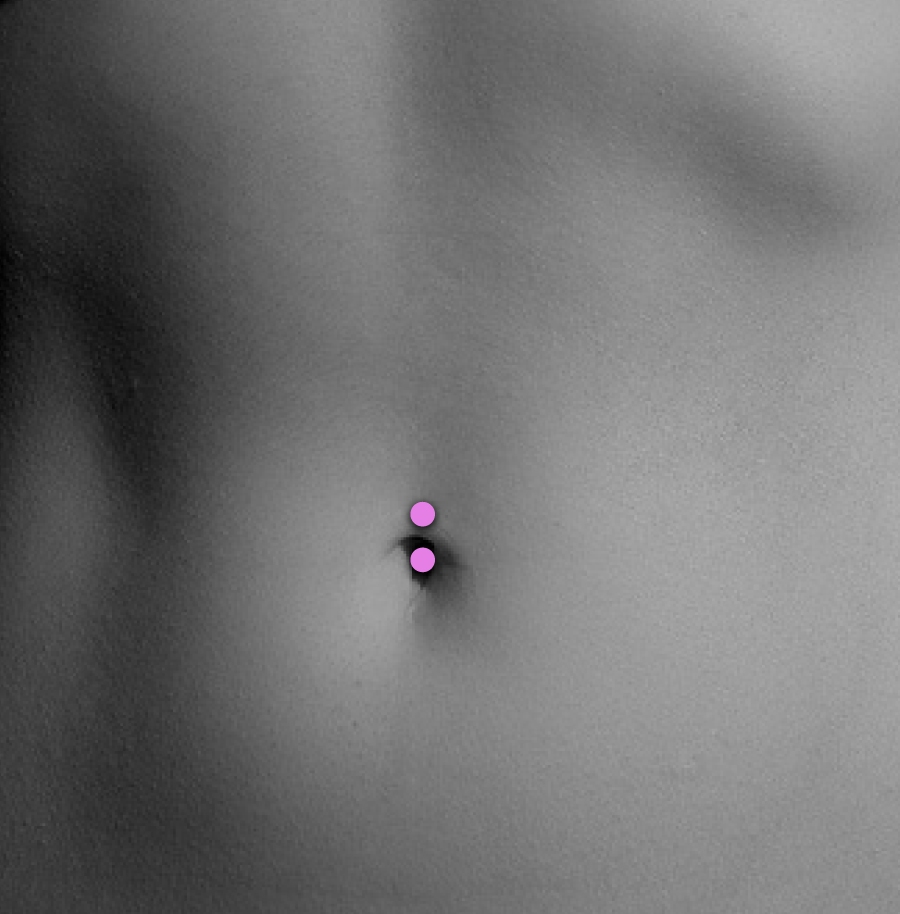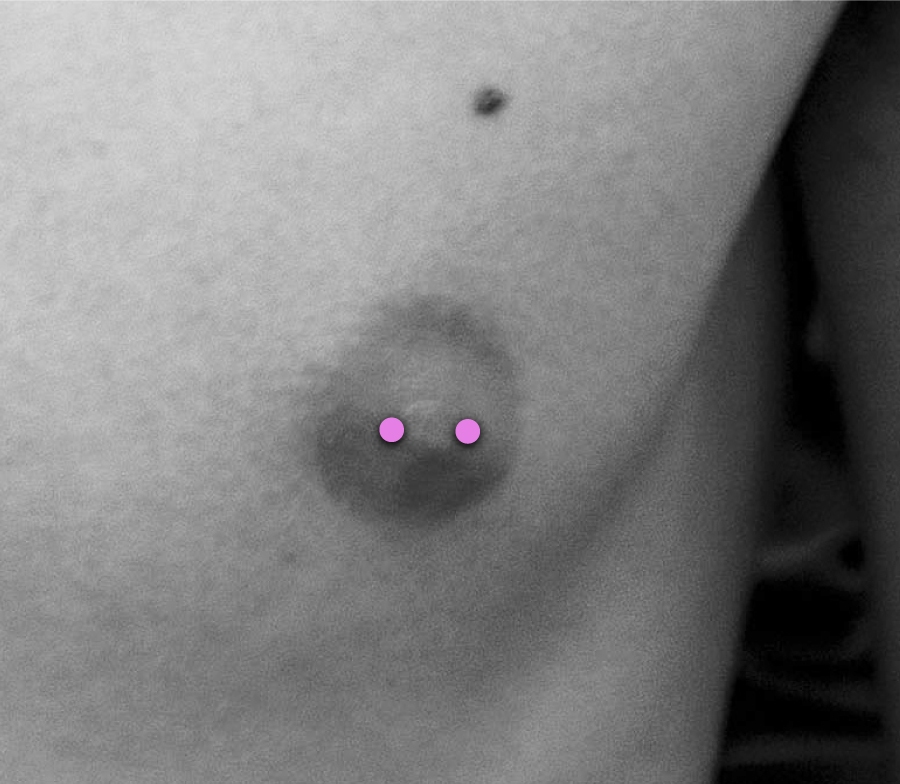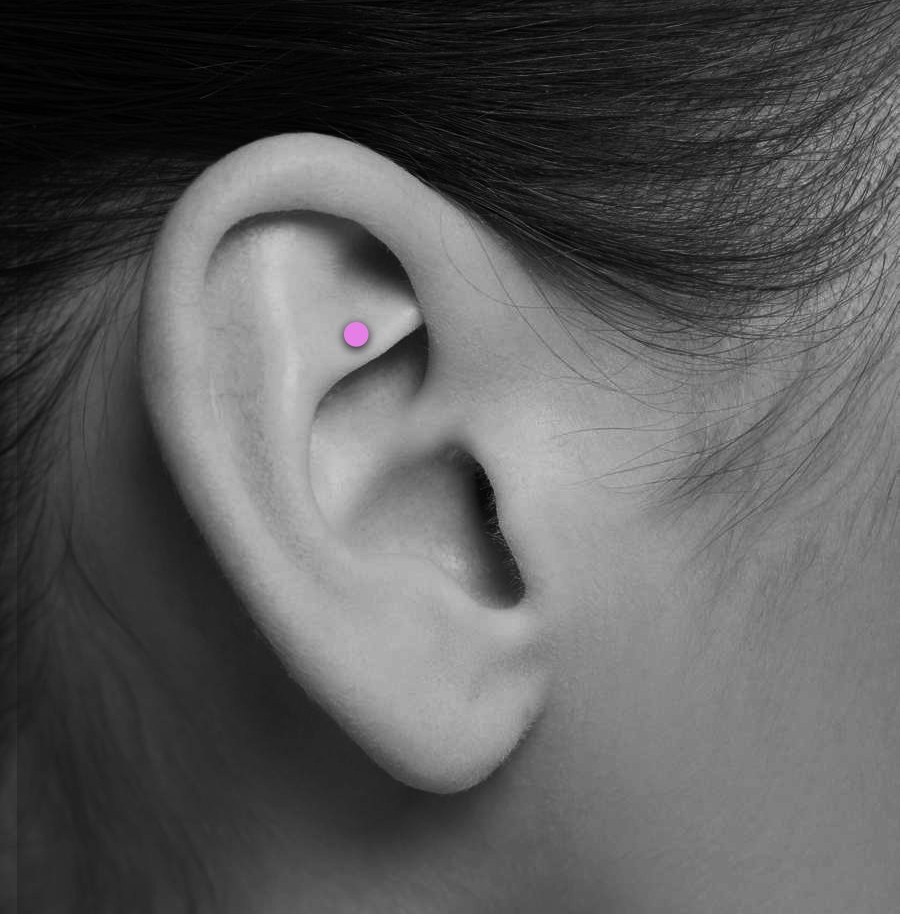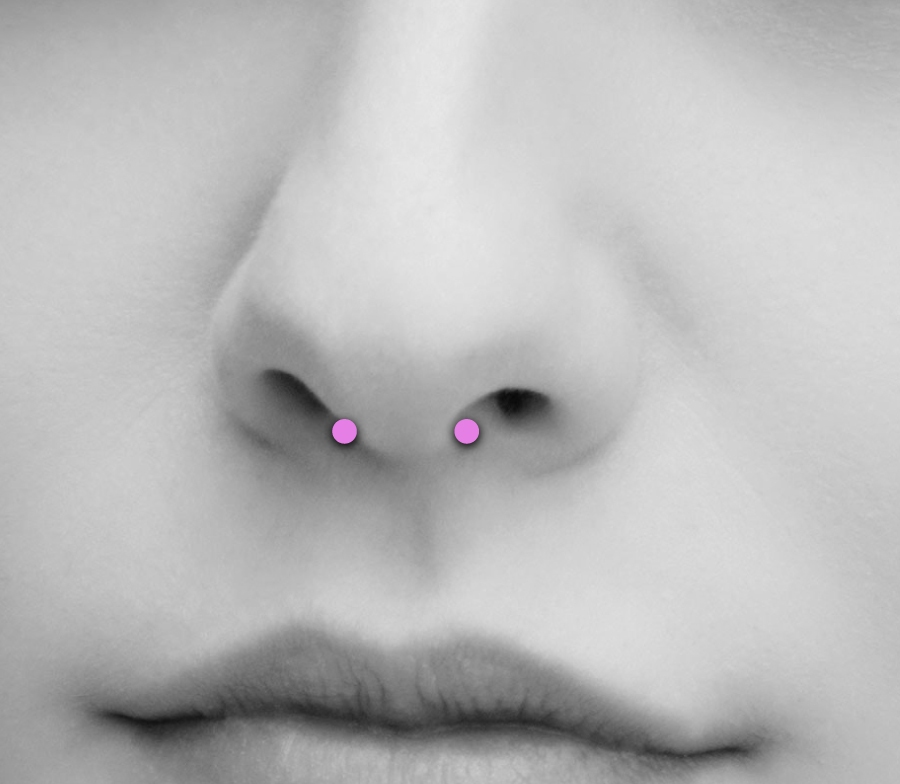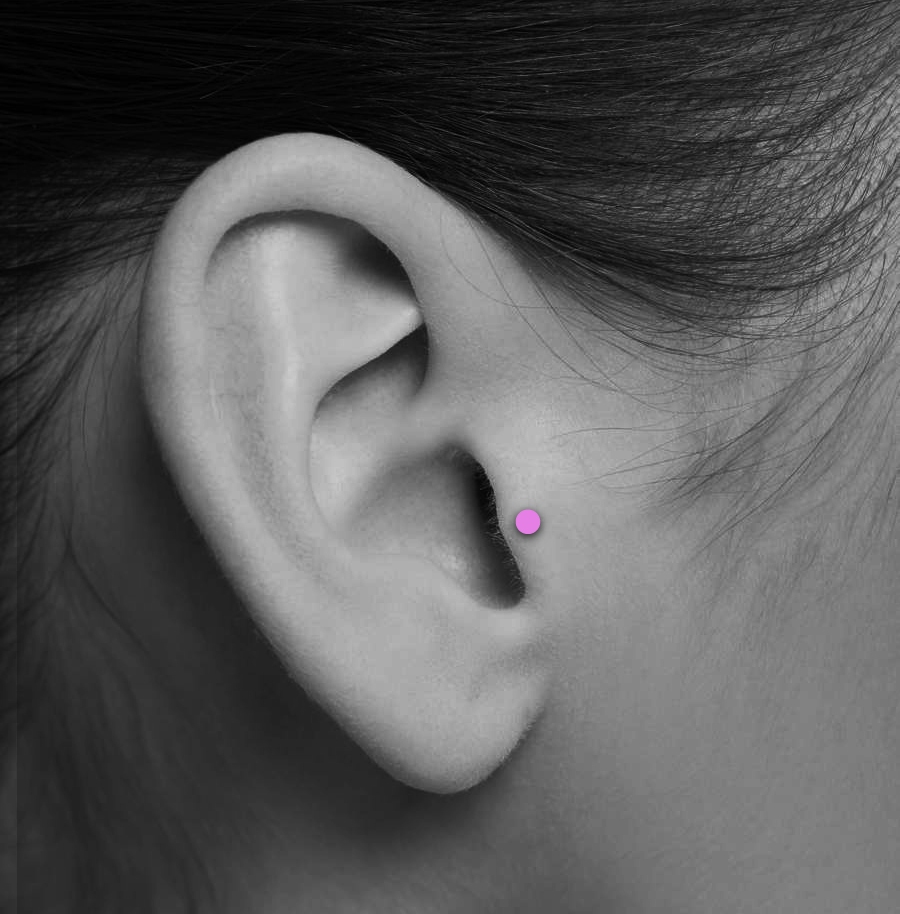The Vibe
Jewellery Information
JEWELLERY CARE
To maximize the quality and life span of your jewellery item, here is a list of things you should avoid your item coming into contact with:
- Saltwater
- Chlorine
- Perfume
- Fake Tan
- Hair Dye
- Make-up
Please bear in mind that this is costume jewellery and needs to be worn with some amount of care.
You must regularly check and tighten the attachments on your jewellery.
JEWELLERY / PIERCING SIZING
Piercings are measured by thickness, diameter and width.
Piercing Rings are measured by the internal diameter.
Septum Clickers are measured by the pin thickness and the internal height.
Straight and curved barbells are measured by the linear width between ball to ball.
- Bar size is indicated in mm (please refer to red markings) It refers to the diameter size of the stem (thickness of the bar). We indicate this size in mm for example 1.6MM
- Size (length) is indicated only in MM (please refer to green markings)
- Balls & all other attachments are indicated in mm (please refer to blue markings)
If you are unsure of Sizing drop us an e-mail sales@thevibeireland.com & we can advise you about sizing to make sure you have the perfect size.
Sizing
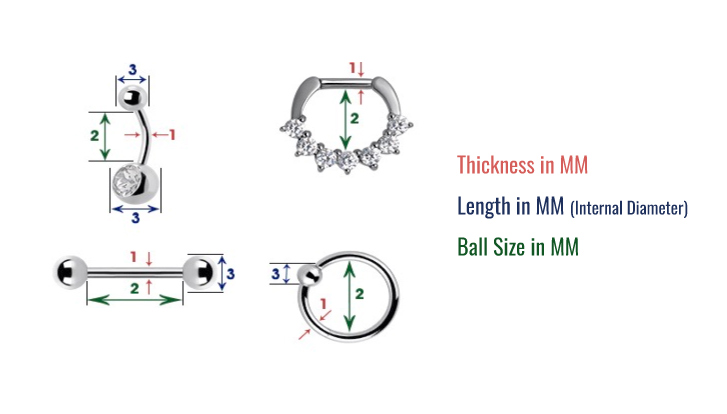
JEWELLERY TYPES AND HOW THEY WORK
THREADLESS OR PRESSFIT
Threadless jewellery works by pulling apart and pushing together. The small pin on the back of the front has a slight bend in it and that creates tension when locked in the post.
INTERNALLY THREADED
The threading is on the removable end, so it will receive the end of the jewellery and create a snug fit by screwing together
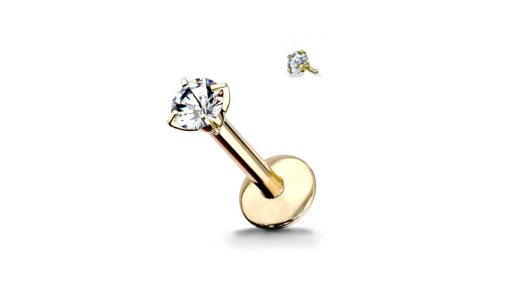
THREADED
Threaded jewellery work’s by screwing together. Lefty loosey, righty tighty.
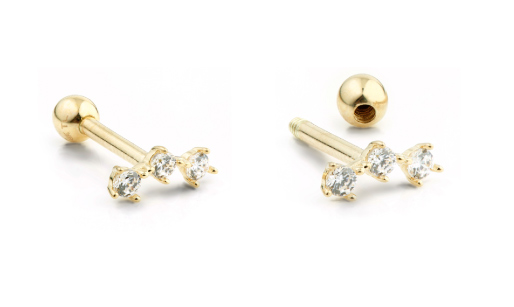
BCR
The ball is held by tenstion! it can be taken out by hand, by pushing the ball from the ring. It can be tricky, you may need tools.
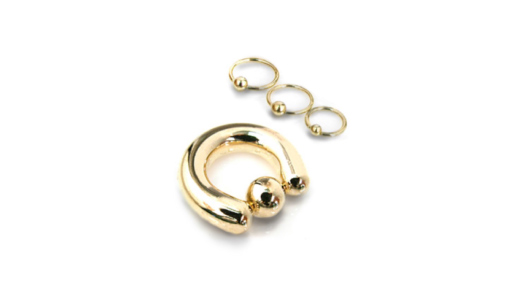
CLICKERS
Clickers have a small hinge that clicks open and closed.
View instructions below:
MATERIALS
GOLD
Gold is considered as one of the most precious metals in the world and is appropriate for initial piercings if it is 14kt or 18kt. 9kt for Healed piercing only
TITANIUM
Titanium is ideal for both initial body piercings and healed piercings as it is compliant with the EU Nickel Directive introduced in Europe in 2001. Because of its virtually 'Nickel Free' content Titanium has become one of the preferred materials used in piercing jewellery.
Grade Ti6AL-4V, ASTM F136 is the specification for the alloy to be used for surgical implants. It is available in Highly Polished or Anodised Colours. Titanium is only half the weight of steel and twice as strong.
SURGICAL STEEL
SS316L is a surgical implant grade, which is the most used material for Body Jewellery. The two most common standards that apply to body jewellery made of steel are ASTM F138 and ISO 5832-1 which describe the qualities of steel for surgical implants.
The element in stainless steel that causes allergic reactions in some people is nickel.
GOLD PVD, ROSE GOLD PVD, BLACK PVD
PVD (Physical Vapor Deposition) process.
The jewellery is coated in a heated chamber under high vacuum. Electric voltage applied will form a plasma in the chamber and the introduction of various gases produces an ion bombardment. This bombardment atomizes the cathode material (24k real Gold) into tiny substances which are deposited on the jewellery. The result is a hardened layer, which is biocompatible. It can be autoclaved.
CHROMIUM ALLOY (COCR NF) NICKEL FREE
Cobalt Chromium Alloys possess high corrosion resistance and amazing strength. It is very hard to break, bend, deform or even scratch. At the same time, it has appealing white colour and shine that resembles precious metals like white gold or platinum. It is widely used in the dental industry and for medical implants like knee and hip joints. The alloy used is Nickel Free with a smooth and shiny surface.
GEMSTONES
Cubic Zirconia

Cubic Zirconia is currently the most popular substitute to a diamond because to the untrained eye they look identical. Cubic Zirconia or CZ as it is referred to is made from zirconium dioxide a different material than diamonds, which although a different chemical composition comes closer than any other gem to matching the characteristics of a diamond. Natural CZ was first discovered in 1899 but it wasn’t until the late 70’s that man made CZ first came into production for use in jewellery.
CZ on first impression looks just like a diamond but under close inspection there are differences, it has a gravity of between 5.6 and 6.0 which means it’s 1.6 times the weight of a diamond. It has a hardness of 8 on the Mohs scale, a refraction index of 2.176 and a dispersive power of 0.060, which means that it’s not as hard as a diamond, it’s slightly less sparkly but displays more prismatic fire which means more colour sparkles within the gem. Another point to note is that natural diamonds display impurities which CZ doesn’t it’s also clear in colour which most diamonds aren’t, but they can be coloured by adding metal oxides in the production process.
Unlike diamonds CZ are good thermal insulators which mean they become warm but can’t withstand the same kind of heat a diamond can, which is one test that is used to distinguish diamonds from CZ. Caring for CZ is important because they are more brittle than diamonds and susceptible to wear and tear such as chipping and scratches over time.
SWAROVSKI® ZIRCONIA
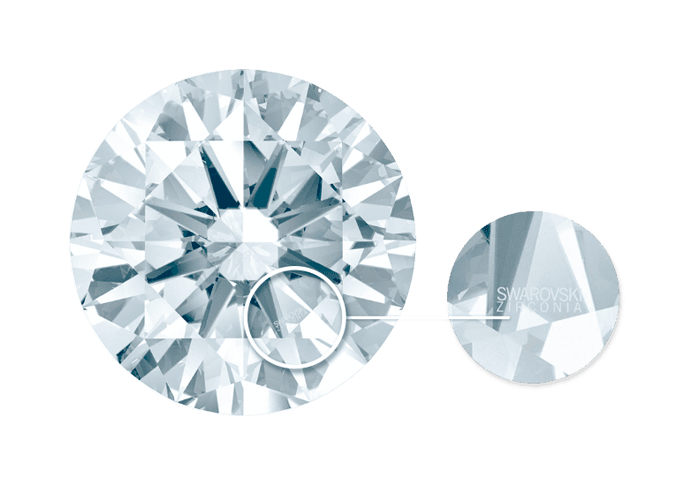
The stones we use under this name are SWAROVSKI® ZIRCONIA (not crystals). This Zirconia stones are cut and polished to perfection exclusively in Austria. They have all the characteristics of a real diamond with its exceptional cut and sheer brilliance. All stones are set by hand and items polished by hand.
- The finest quality available today.
- Created using only the highest quality raw materials.
- Swarovski's Pure Brilliance Cut for Zirconia has 57 facets.
- Swarovski's Pure Brilliance Cut delivers the same level of brilliance as natural diamonds.
- The engraving guarantees that the zirconia stones are cut in accordance with the cutting parameters stated by the GIA as being 'ideal for diamonds'.
- Every single Pure Brilliance Cut Zirconia carries the exclusive Swarovski engraving, even down to a size of 0.8 mm.
- The perfectly balanced proportions of our stones enhance the brilliance and beauty of any jewellery.
- Zirconia has near-identical properties to diamonds in terms of brilliance, refraction and durability.
- Zirconia can withstand very high temperatures (2750° C) and can therefore be set like a genuine diamond.
- Zirconia can be applied to jewellery without the need for adhesives, making it extremely durable and ideal for everyday wear.
SWAROVSKI® GEMSTONES
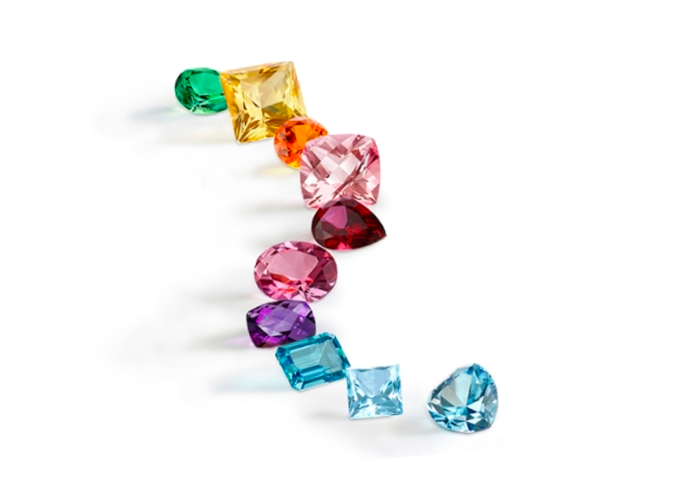
Each of our Genuine Gemstones reflects the quality, creativity, and technical precision that the name Swarovski has come to stand for. Our exceptional stones are skilfully cut from raw, natural materials, which in turn define the limitations and supply of our selected gemstone rough.
Swarovski's Genuine Gemstones infuse the natural beauty of the stone with a new dimension of brilliance, providing creative inspiration for jewellery and watch design.
LAB CREATED OPALS
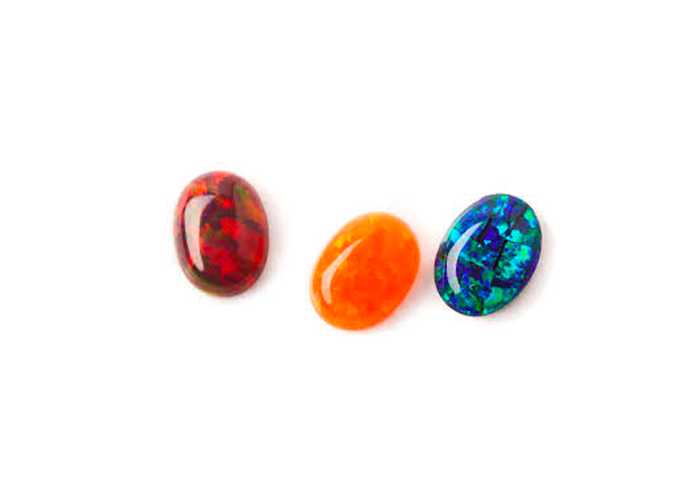
Lab Created Opal (GIA: Polymer Impregnated synthetic opal) is impregnated in the laboratory in around a year and has similar properties as that of natural opal. The main difference with natural opal is that the naturally occurring process has been sped up in the laboratory. Our Lab Created Opal is a beautiful opal with a perfect colour dynamicity - revealed the beauty of Precious Opal.
RETURNS
Unfortunately we don't accept returns of our Jewellery due to hygiene reasons.

